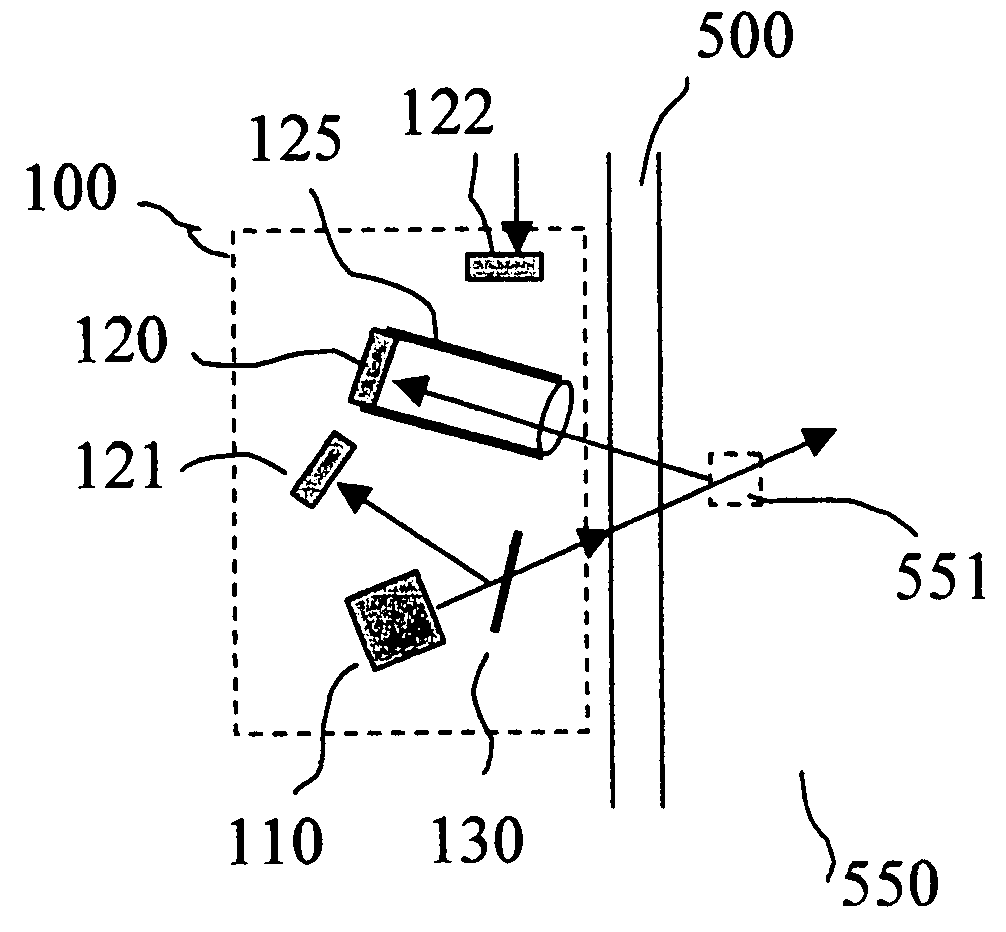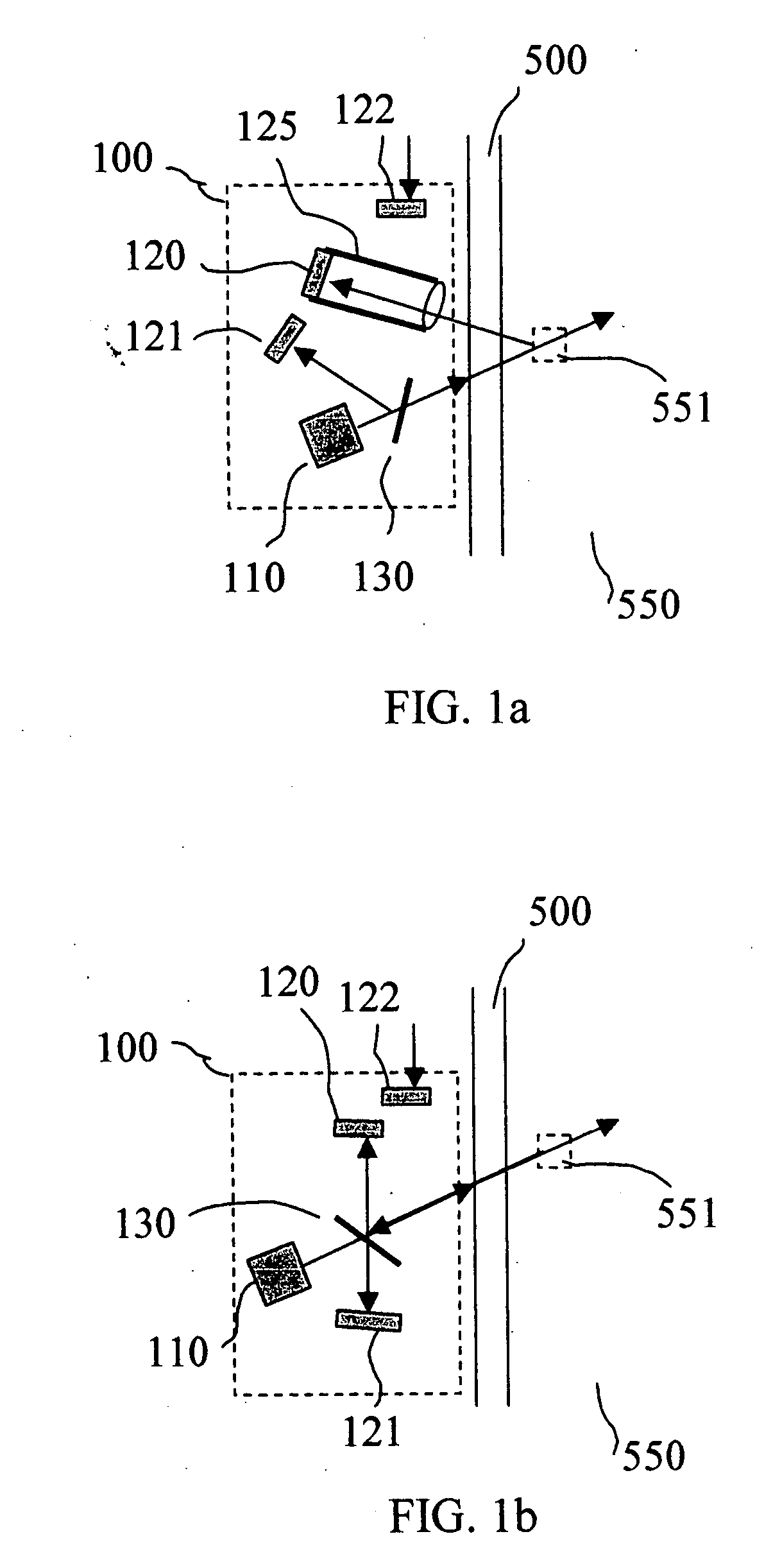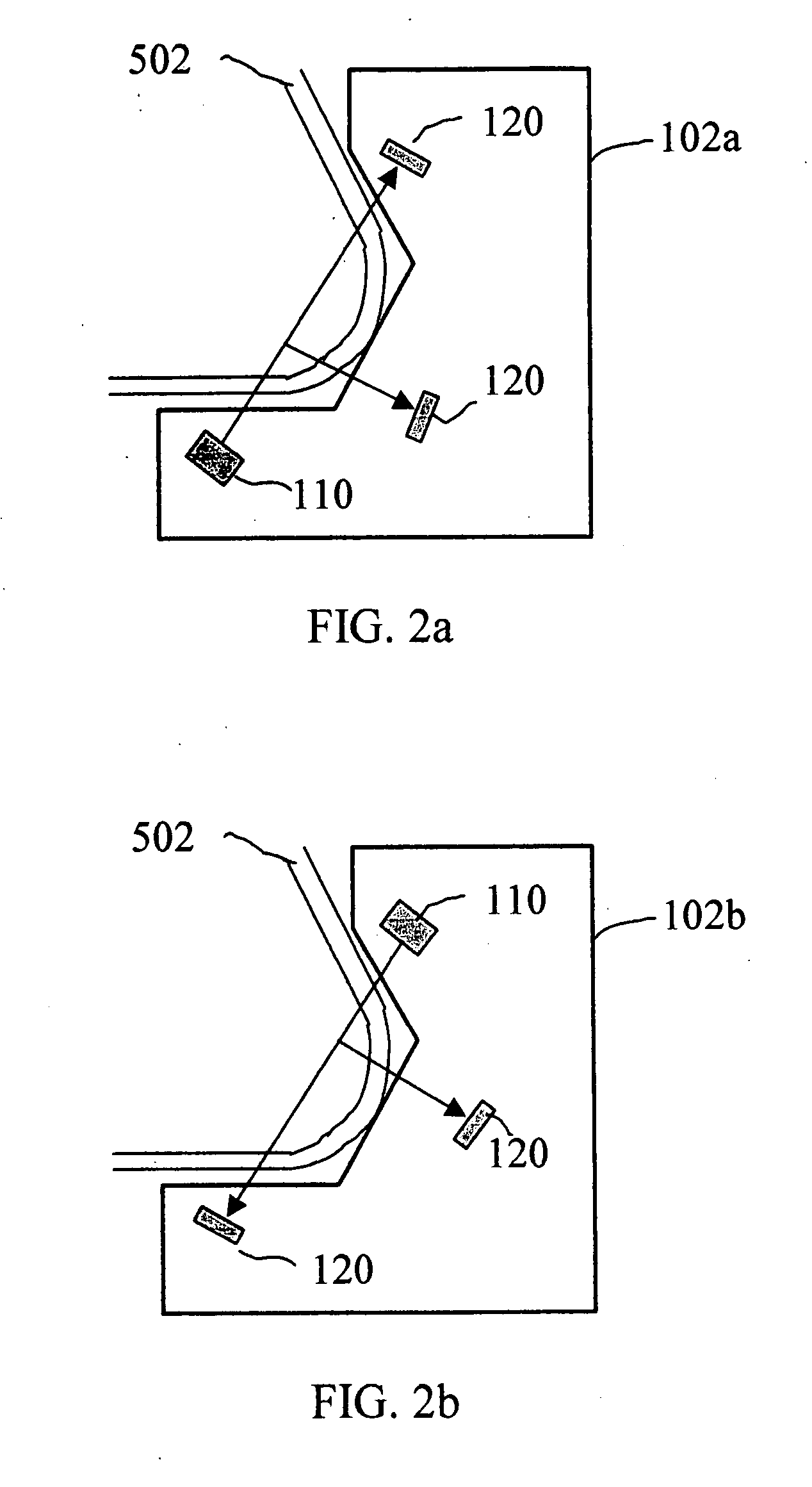Method and apparatus for monitoring biological substance
a biological substance and monitoring method technology, applied in the direction of instruments, measurement devices, color/spectral properties measurement, etc., can solve the problems of affecting the growth curve of biological culture, affecting the stability of biological culture, and affecting the quality of biological culture,
- Summary
- Abstract
- Description
- Claims
- Application Information
AI Technical Summary
Benefits of technology
Problems solved by technology
Method used
Image
Examples
first embodiment
[0030] In the first embodiment, a basic probe 100 based on the scattering technique is schematically shown in FIGS. 1a & lb. The probe includes a light source 110 (or multiple light sources) and a photodetector 120 (or multiple photodetectors) such as a photodiode, a phototransistor or a photoconductive cell (CdS). The source 110 can be a monochromic source like a semiconductor laser source, Light Emission Diode (LED) or a non-monochromic source like ordinary flash lamp, tungsten lamp and broadband LED. The source 110 can be in UV, visible or NIR wavelength. The detector 120 is to detect the scattered light from a medium 550 through a transparent wall of a biological medium container 500 when the light source 110 emits light on the medium 550. Medium 550 can be a biological medium, a chemical solution or wastewater. The medium container 500 can be a typical flask, beaker or bottle with a small, medium or large volume. For the monochromic source, the photodetector 120 can have a ligh...
third embodiment
[0037] In the third embodiment, only scattering technique is used. As schematically shown in FIGS. 3a, 3b, 3c &3d, probe 103, 104 and 105 are designed for a typical flask 502. Probe 103, 104 or 105 is a variation of probe 100 for taking the advantages of the corner part of a media container like that of a flask. To fit flask 502 well with probe 103, 104 or 105, the size and shape of flask 502 and probe 103, 104 and 105 should also be standardized. Probe 103, 104 and 105 can have different sizes to adapt to standardized flasks with different size and volumes such as 125 ml, 250 ml, 500 ml, 1 L, 2 L and 3 L. The important feature of this embodiment is also to utilize the bottom corner of a typical flask. Light source 110 can be arranged either below flask 502 as shown in FIG. 3a or above the flask corner as shown in FIGS. 3b &3c. In this embodiment, a specially constructed flask with a smaller round corner can be one alternative. To reduce the light reflection of transmitted light on ...
fifth embodiment
[0040] In the fifth embodiment, to correct the unwanted signal from ambient light source, an ambient light compensation scheme is shown schematically in FIG. 7. In this embodiment, a reference photodetector for ambient light detection is not required. However, the light emitted from source 110 is pulse regulated. One option is an on-off-on pulse signal. When the light is on, sensor 120 detects both scattered light and ambient light. When the light is off, the same sensor 120 detects only ambient light. The later signal can be used to compensate the former signal. Since these two signals are not detected at the same time, the compensation can only be effective when the ambient light change slowly and considered as a constant during an on-and-off period. This scheme could be realized by including a pulse generating circuit 145, light source driver 146 and a pulse gated signal detection circuit 147.
PUM
| Property | Measurement | Unit |
|---|---|---|
| volume | aaaaa | aaaaa |
| volume | aaaaa | aaaaa |
| volume | aaaaa | aaaaa |
Abstract
Description
Claims
Application Information
 Login to View More
Login to View More - R&D
- Intellectual Property
- Life Sciences
- Materials
- Tech Scout
- Unparalleled Data Quality
- Higher Quality Content
- 60% Fewer Hallucinations
Browse by: Latest US Patents, China's latest patents, Technical Efficacy Thesaurus, Application Domain, Technology Topic, Popular Technical Reports.
© 2025 PatSnap. All rights reserved.Legal|Privacy policy|Modern Slavery Act Transparency Statement|Sitemap|About US| Contact US: help@patsnap.com



